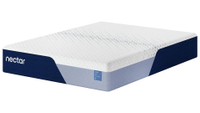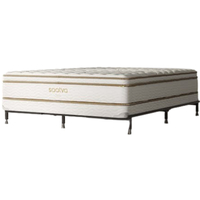Memory foam vs pillow-top mattresses: Which bed type is right for you?
We've slept on and reviewed both memory foam and pillow-top mattresses — here's how to know which suits your sleep
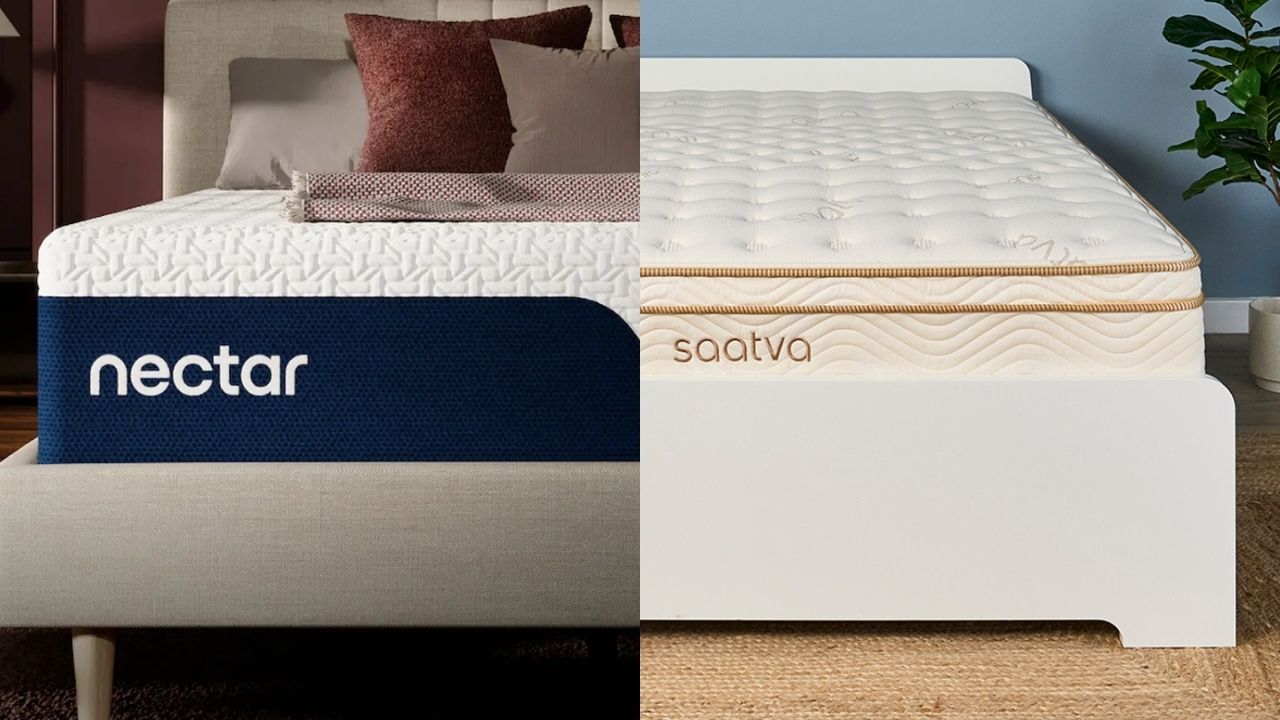
When choosing a new bed, understanding the different types of mattresses that are available can be difficult. From hybrid and spring mattresses to memory foam and pillow-tops, which is right for your sleep? We’re taking a closer look at the latter two, dissecting what the difference is between memory foam and pillow-top beds and what you can expect from each.
Our round up of the best mattresses of the year include both memory foam mattresses and pillow-top options. Each has their own benefits and will suit different types of sleeper. Want to prioritize motion isolation and firm support? Opt for a dense foam bed. But if you want that extra luxurious layer to cushion your body, a pillow-top could be the perfect choice.
We’ve slept on and reviewed the best memory foam mattresses and the best pillow-top mattresses. In the below comparison piece, we’ll be comparing the two to help you decide what to invest in. And, with mattress sales running throughout the year, you can expect to get a great deal on whatever you choose.
Memory foam vs pillow-top: What is a memory foam mattress?
- Memory foam is a man-made polyfoam
- It excels in pressure relief and motion isolation
- Memory foam mattresses usually have at least three layers of foam
Memory foam was initially developed by NASA to cushion its astronauts during take off. The material is slow moving, so while it adapts slowly to your body, it can take a while to return to its initial shape. This makes it a great material for mattresses, as it contours to your body and relieves pressure.
Imagine someone who sleeps predominantly on their side. If the shoulders and hips are digging into a mattress surface without any give, pressure will build at these points and you’ll need to change positions to find relief. However, with memory foam, these areas gently sink into the mattress so your weight is balanced across the mattress.
That's why a memory foam top layer is a common feature of some of the best mattresses for side sleepers.
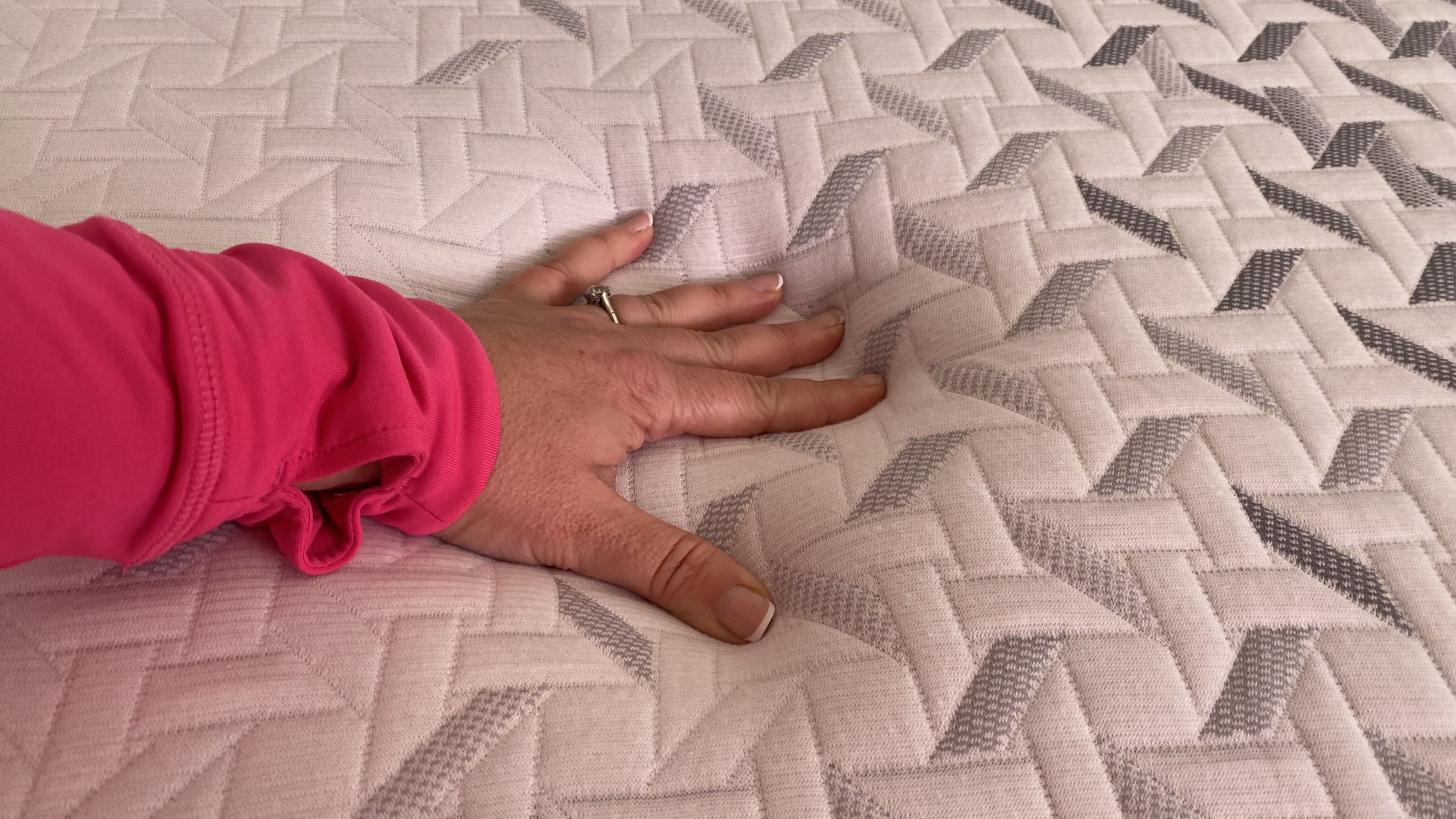
Memory foam can come in different densities and firmness levels, which means that softer foams can contour to your body at the top of a mattress, while firmer, more dense foams can be used as a support core, to keep your spine aligned.
This means there’s usually lots of choice, so most sleepers will be able to find a memory foam mattress suited to their sleeping positions and sleep needs.
Most memory foam mattresses have at least three layers, with some containing as many as 10, or even more. You can generally expect a memory foam mattress to isolate motion very well (making it a good choice for couples,) relieve pressure as we mentioned and contour to your body.
Memory foam vs pillow-top: What is a pillow-top mattress?
A pillow-top mattress refers to a mattress that has an extra layer stitched on top. Pillow-top layers can go on top of nearly all types of mattresses, like latex, spring and hybrid. While technically they can be added on to memory foam mattresses, this is rare to see as it will stop sleepers from feeling the immediate benefits of a foam mattress.
These layers are designed to offer extra pressure relief and comfort, and can be made from all sorts of materials like foam, latex, wool and cotton.
Often, sleepers opt to add a pillow-top layer to a firm mattress, so while they still benefit from the robust support of a firm mattress, they can still feel the comfort and ‘give’ of a luxury layer on top.
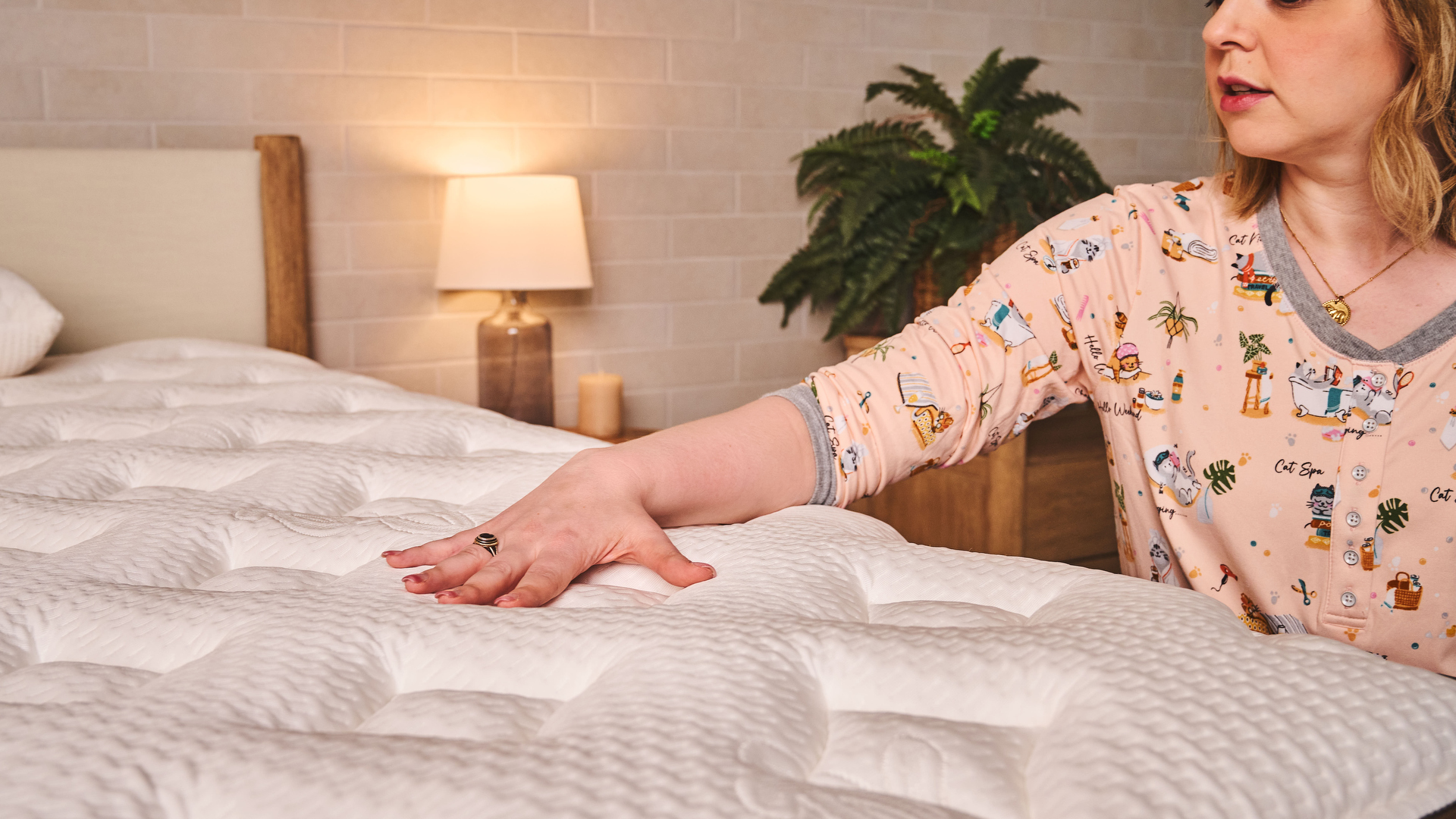
Side sleepers will benefit most from pillow-top mattresses, while front sleepers may find their hips sink too much into the softer layer, throwing their spine out of alignment. Back sleepers or heavy sleepers will reap the benefits of a pillow-top mattress if they choose a firm feel beneath it.
Stomach sleepers should generally avoid pillow-top layers as, like some back sleepers, will likely struggle to stay in a neutral and comfortable position for their spines throughout the night.
Pillow-top mattresses are usually a more luxury purchase made from high-quality materials, so you can expect a slightly higher average price point.
Memory foam vs pillow-top: Key differences
- Memory foam is better for motion isolation
- Pillow-top mattresses are better for temperature regulation
- Memory foam mattresses are more likely to off-gas
While both memory foam and pillow-top mattresses offer great pressure relief, there are some key differences that make them more suitable to different types of sleepers. Here are the differences you can expect in key areas:
Temperature regulation: While many of the best cooling mattresses are memory foam (with added cooling tech), memory foam is a dense material that has the tendency to trap heat, making it more difficult for sleepers to regulate their temperature.
A pillow top adds an extra layer between you and the mattress and the materials used are often moisture wicking and naturally breathable, like wool and cotton. This increases airflow, meaning pillow-top mattresses are more likely to sleep cool, compared to memory foam.
Off-gassing: Because memory foam is a chemical-based, man-made foam, it contains VOCs (volatile organic compounds) that evaporate when new mattresses are unwrapped or unboxed.
This is called off-gassing and while it's not dangerous, it has a very strong chemical smell that can irritate the nose and eyes, especially in young children or those with asthma. Because pillow-top layers are often made from natural materials, like in the best organic mattresses, you can enjoy a non-toxic sleep with minimal to no off-gassing.
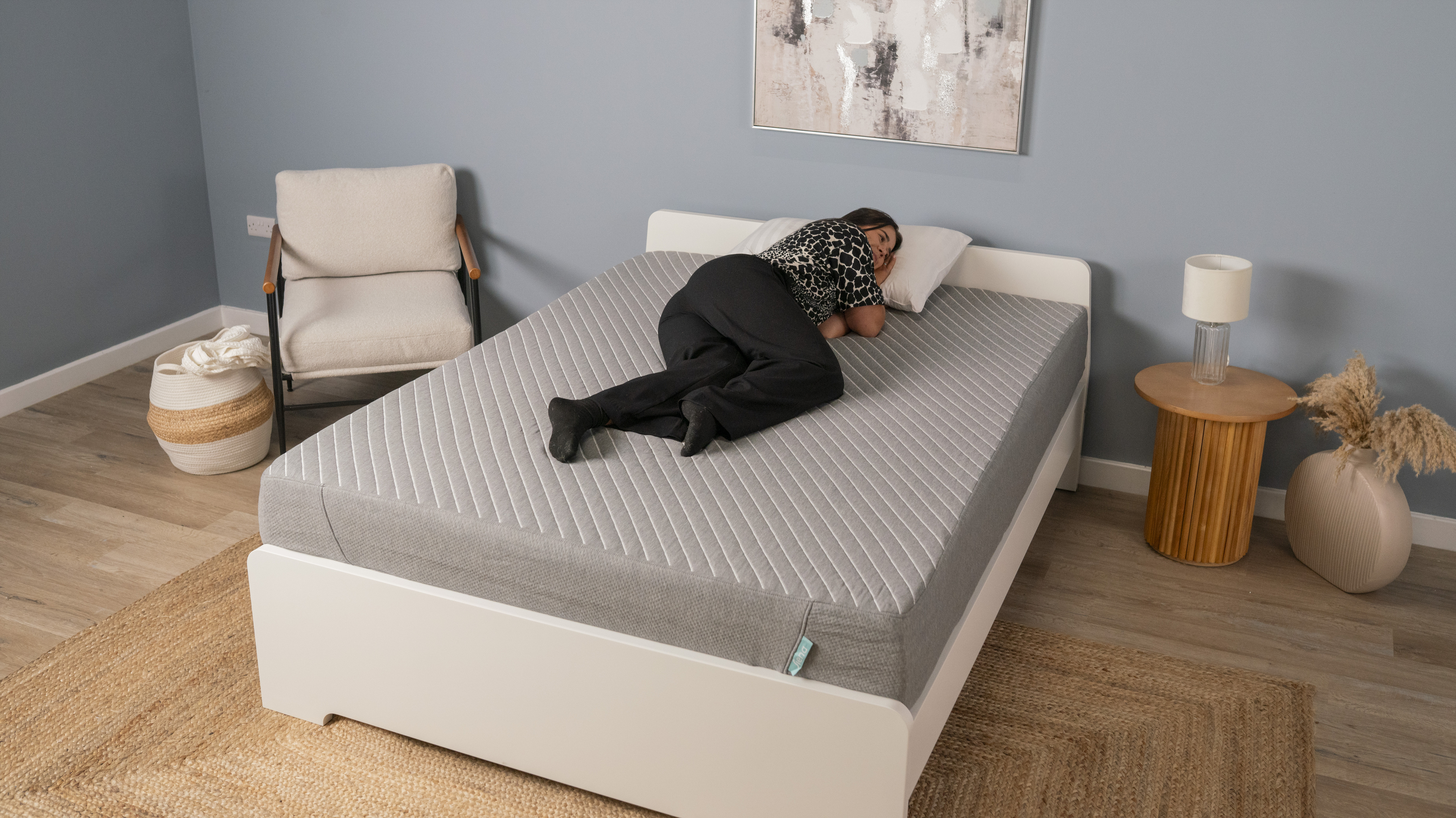
Motion isolation: The slow moving nature of memory foam means it absorbs motion, stopping any movement from traveling across the surface of the bed. This can be a life-saver for those sharing with a restless partner, kids or pets.
Pillow-top beds, on the other hand, are less likely to absorb motion as effectively. Depending on the material, these extra layers can be more responsive to movement. Latex, in particular, will have a certain ‘bounce’ to it.
Support: Both memory foam and pillow-top mattresses have the potential to offer great support. The Saatva Classic, for example, uses its pillow-top layer to deliver extra, targeted lumbar support, making it a great mattress for back pain.
Pillow-top mattresses have the edge over memory foam, as they are a great option for those who require firm, robust support but need a little extra cushioning, as well.
Memory foam vs pillow-top: Sleeping positions
- Firmer memory foam mattresses are better for front sleepers
- Pillow-top mattresses provide more cushioning for side sleepers
- Back sleepers can benefit from both
It can often come as a surprise that choosing the right mattress for you means considering your sleeping position.
Different ways of sleeping can put strain on different areas of your body, but your bed can minimize the impact, ensure your spine stays aligned and that you stay comfortable no matter how you sleep.
So, what positions are memory foam mattresses and pillow-top mattresses more suited to? Let’s take a look.
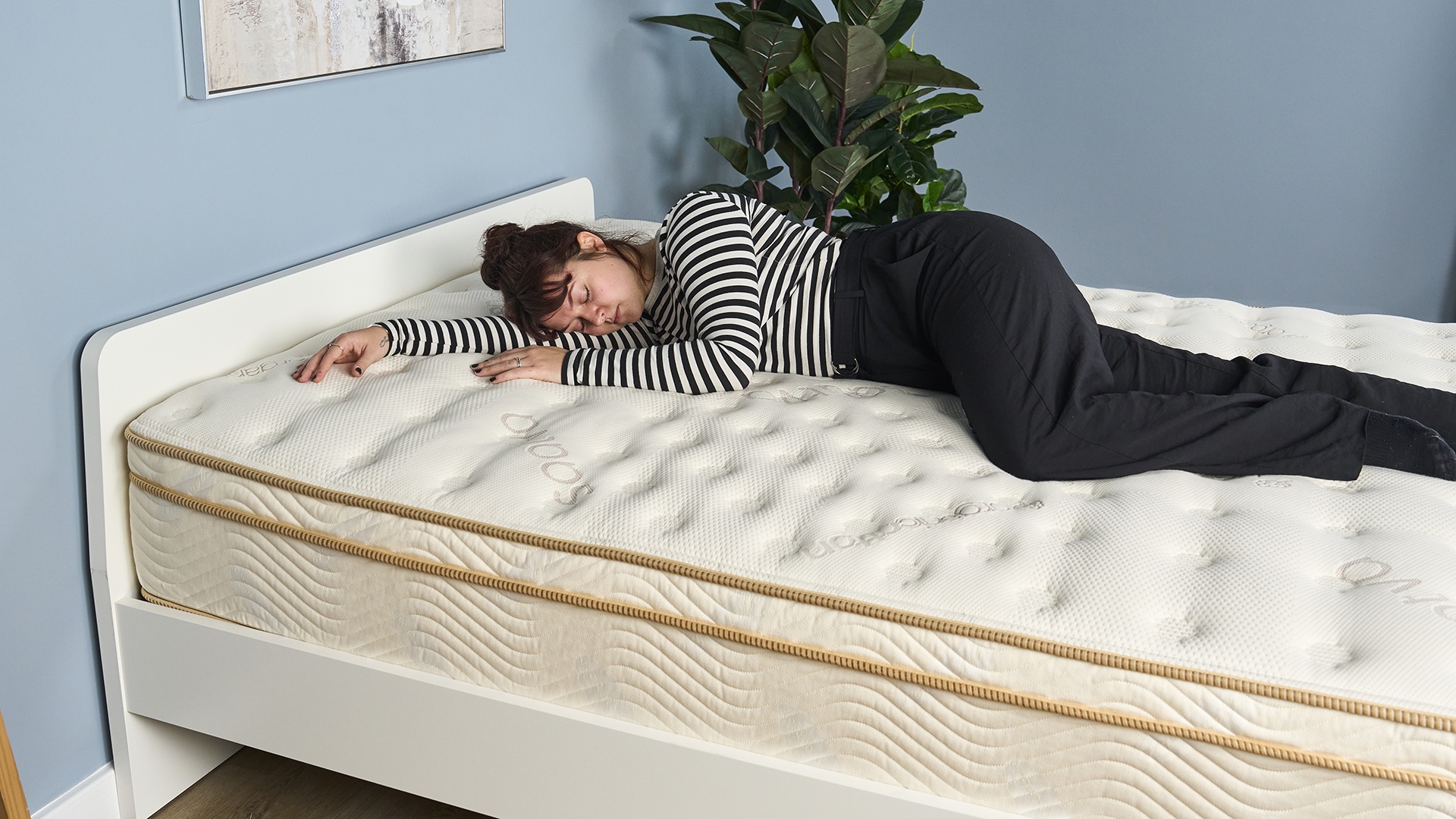
Side sleepers: While a plush to medium-firm memory foam mattress will provide plenty of pressure relief for side sleepers, pillow-top mattresses take it one step further. As you see in some of the best mattresses for side sleepers, the extra layer of cushioning, contouring pressure relief means side sleepers are likely to feel comfortable night long on a pillow-top bed.
Front sleepers: Front sleepers need a firm surface to keep their spines aligned and stop their hips from sinking too far into the mattress. For this reason, a pillow-top layer can easily cause too much strain on the back, as it’ll likely be too soft to support you. Opting for a medium-firm to firm memory foam mattress should provide the support you need.
Back/combi sleepers: Broadly speaking, most back sleepers and combination sleepers will be able to find both memory foam and pillow-top mattresses that suit their sleep style and support their bodies. Pillow-top mattresses can offer a little more contouring for back sleepers, especially those with arched backs who need the space between them and their bed ‘filled in’ more.
Memory foam vs pillow-top: Price and deals
- You can find more budget memory foam mattress options
- Pillow-top mattresses generally have a higher price
- Pillow tops can often be added to regular mattresses at a cost
Memory foam is a relatively cheap material to produce, which means memory foam mattress prices vary a lot. Many of the best cheap mattresses are simple 3-layered foam beds, with prices from brands like Siena starting from just $179.
However, many of the best luxury mattresses are also made from memory foam and sit in the premium price range. So, no matter your budget, you’re likely to find a foam bed suited to you.
Pillow tops, on the other hand, usually have a higher price. Adding an extra layer to a bed requires more material and more production time. On top of this, as we mentioned, pillow tops often use high-quality, natural materials that can cost a lot to source, like cotton, wool and latex.
This means that they naturally sit in the premium price range. However, our best value pick in our pillow-top mattress round up this year is the Brooklyn Bedding Signature Hybrid, which currently starts from just $465.50 (MSRP $665). So, if you are working with a smaller budget but have your heart set on an indulgent pillow top, there are options out there.
Many mattress brands offer the option to upgrade a mattress to include a pillow top. This usually increases the price by at least $200.
Here are two examples; our best memory foam mattress and our best pillow-top mattress:
Nectar Classic memory foam mattress: from $349 at Nectar
The Nectar Classic is a simple, but effective memory foam mattress. It has three layers of foam, plus a cooling cover, and has a medium-firm feel. During our Nectar Classic mattress review, we found this memory foam mattress performed exceptionally well for motion isolation, scoring 4.5 out of 5 in our tests. We also found that it offered great pressure relief for side sleepers, but back and front sleepers might need a firmer option. Nectar mattress sales occur throughout the year, and currently a queen is $649 (with the total value calculated at $1,598) and you can add on $599 of bedding for just $159. You’ll also get a lifetime warranty, free shipping and a 365-night sleep trial.
Saatva Classic pillow-top mattress: from $1,399 $1,190 at Saatva
We rate the Saatva Classic as not only the best pillow-top mattress, but also the best hybrid mattress. It’s made up of 5 layers of high-density memory foam, a euro pillow top and individually wrapped coils. The pillow top is 3” and has Lumbar Zone Quilting to provide extra back support. Our lead tester for the Saatva Classic mattress review awarded it an impressive full marks with 5 stars, praising the superb pressure relief, comfort and motion isolation. You can choose from three firmness levels to suit your sleep: Plush Soft, Luxury Firm and Firm. Saatva mattress sales run throughout the year, and currently a queen is $1,785 (was $2,099). We expect this discount to increase for Memorial Day, so it might be worth waiting before you buy. You’ll also get a 365-night sleep trial, lifetime warranty and free white glove delivery.
Memory foam vs pillow-top: Which should you buy?
Buy a memory foam mattress if…
✅You share your bed with a restless partner: Whether it’s a fidgety partner, a restless pet or your children, sharing a bed can lead to multiple nighttime wake ups if you don’t have a mattress with good motion isolation. Memory foam will ensure you sleep peacefully without being disturbed.
✅You’re a stomach sleeper: If you sleep on your front, you’ll need a firmer sleep surface. Dense, medium-firm memory foam can provide just enough ‘give’ for stomach sleepers, without compromising spine alignment with too much sink.
✅You’re working with a smaller budget: Memory foam is the material used in many cheap mattresses, meaning you can get a quality bed for less.
Buy a pillow-top mattress if…
✅You’re looking for luxury: There’s no doubt about it; pillow-top mattresses have a luxury feel, thanks to that extra sink-in cushioning. If you’re looking for a bit of indulgence, then a pillow-top bed will definitely deliver.
✅You’re a side sleeper: If you sleep on your side, a pillow-top layer will help cushion pressure points like your hips, shoulders and knees so you can stop tossing and turning and remain comfortable throughout the night.
✅You need extra cushioning: Whether you have joint pain or back pain, a pillow-top mattress can provide that extra cushioning around your body to ensure you feel supported and comfortable.
Sign up to get the BEST of Tom's Guide direct to your inbox.
Get instant access to breaking news, the hottest reviews, great deals and helpful tips.

Lauren is an experienced writer and editor in the health and lifestyle industry and has led many campaigns and projects that deliver news, advice, and research on all things sleep. As the Sleep Features Editor for Tom’s Guide, Lauren writes, commissions and edits sleep and mattress content, from in-depth how-tos in sleep and mattress health to interviews with doctors and neuroscientists on the latest news in sleep. Lauren regularly tests new sleep tech and accessories to evaluate their effectiveness for getting good quality sleep and easing specific sleep struggles like nighttime anxiety. Alongside this, Lauren reports on the best mattress brands out there, like Helix, Saatva, and DreamCloud, helping readers find the right mattress for them and the best deals on them.
You must confirm your public display name before commenting
Please logout and then login again, you will then be prompted to enter your display name.
